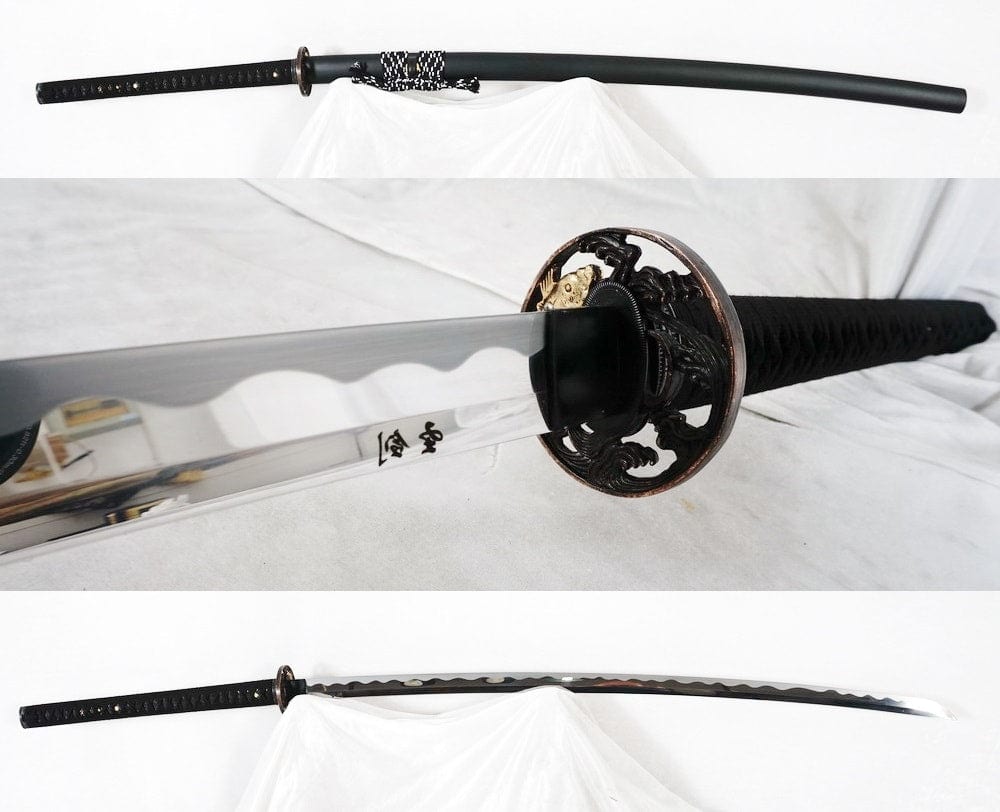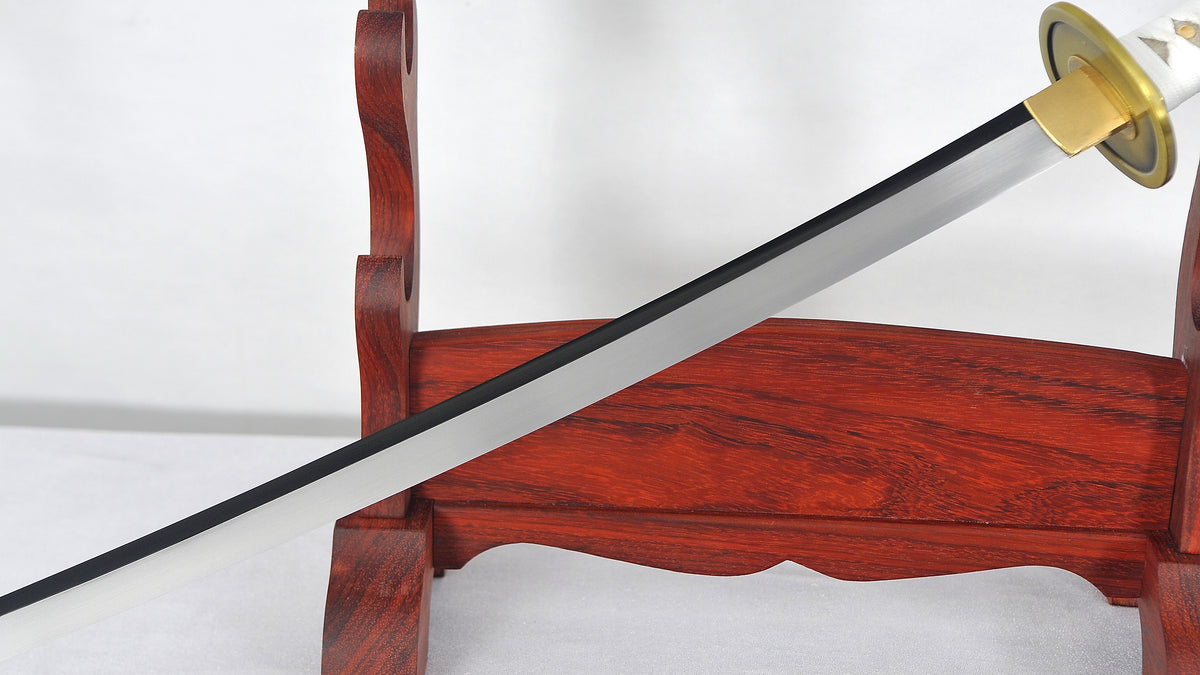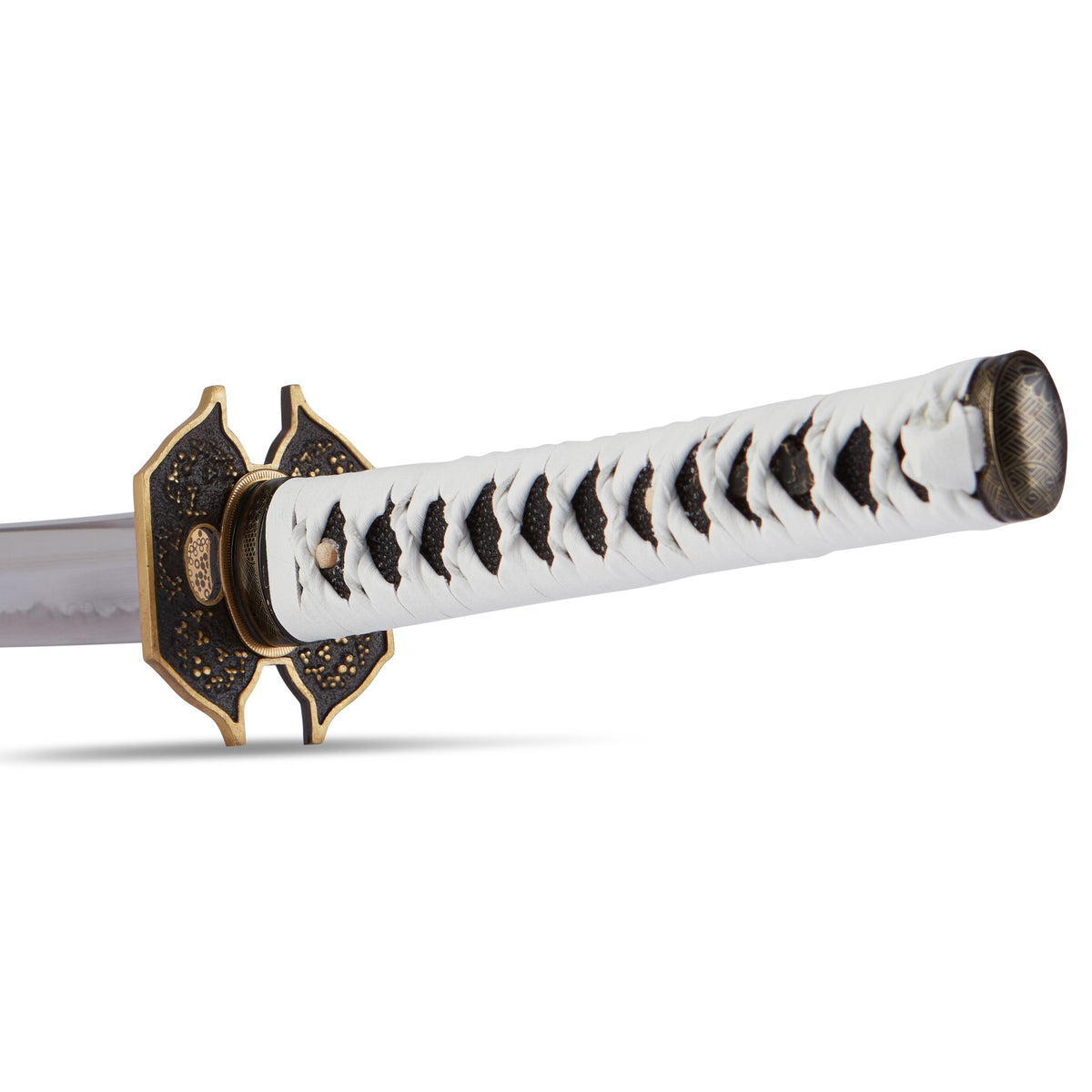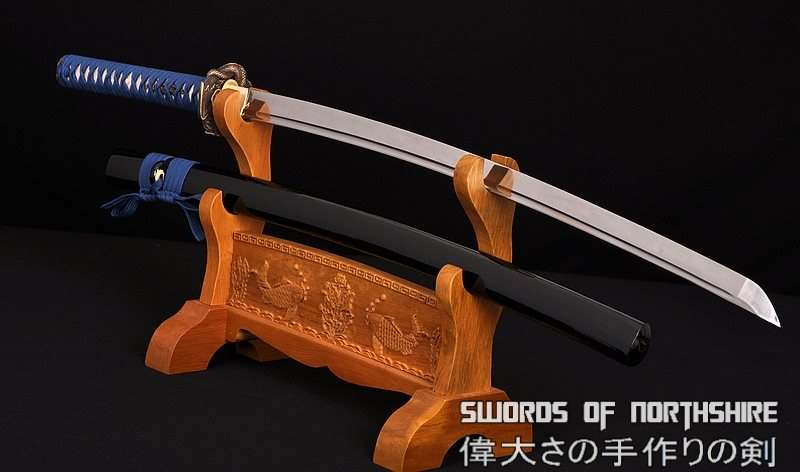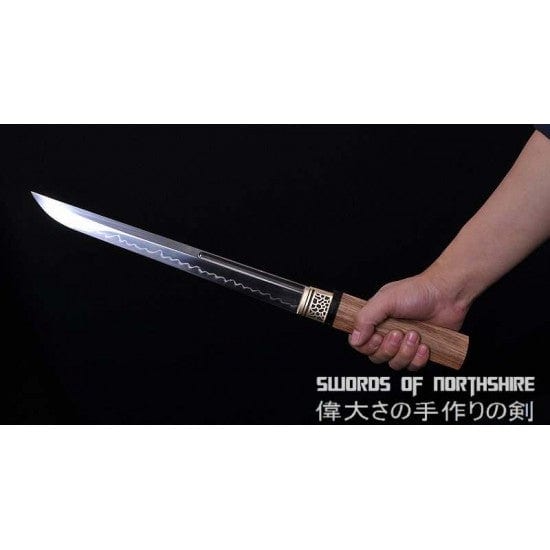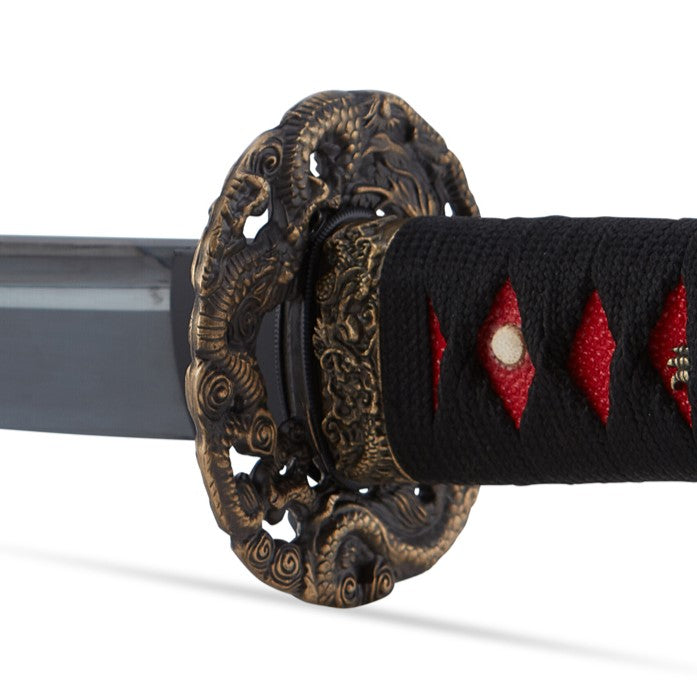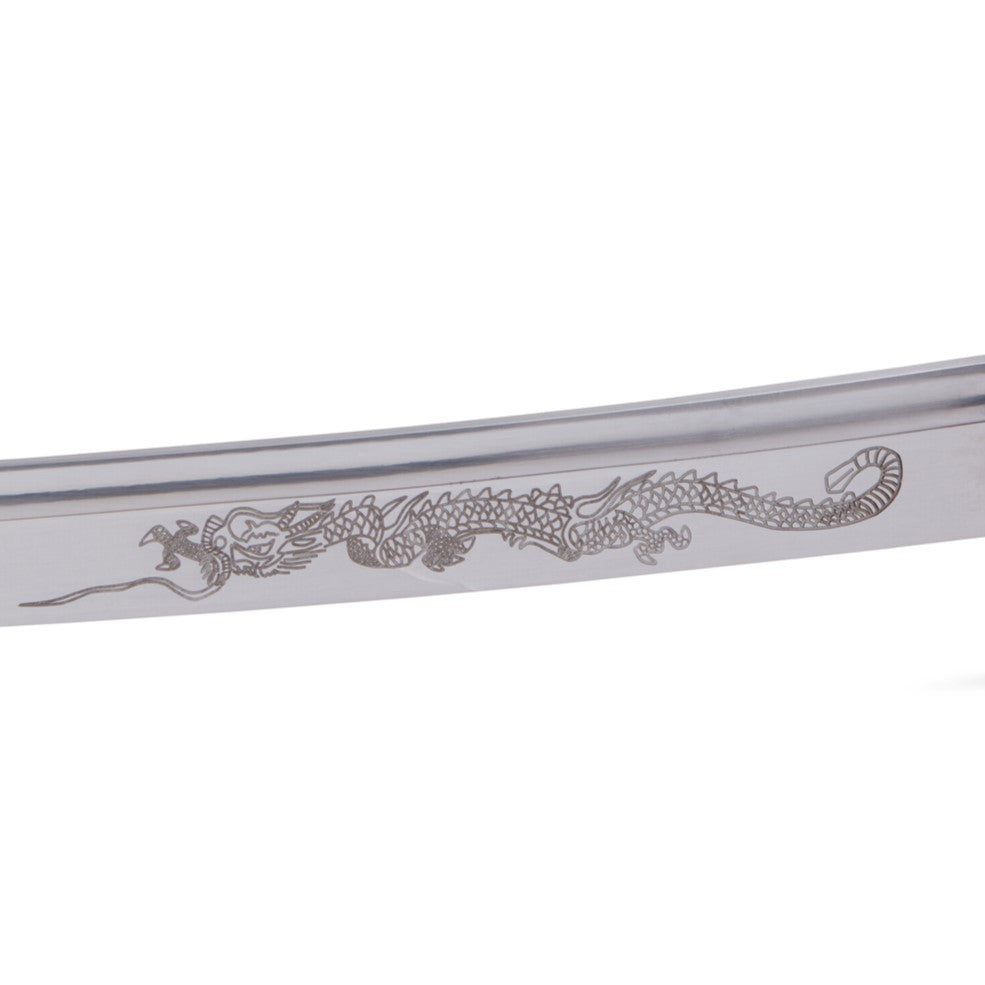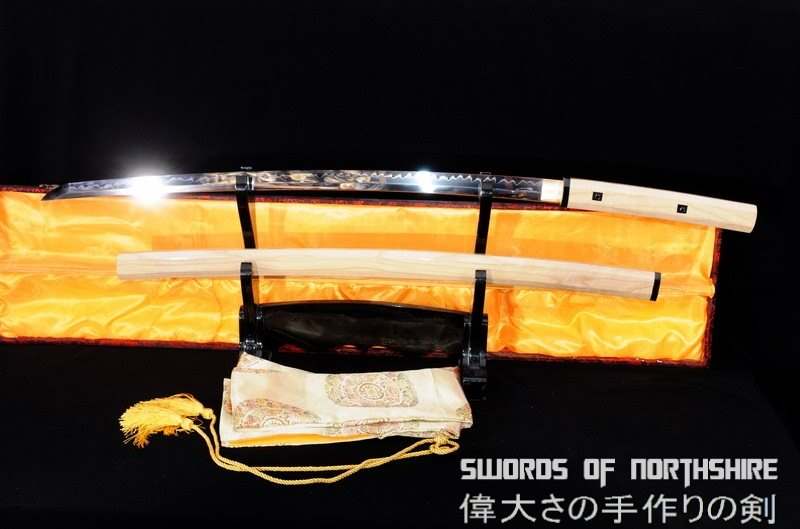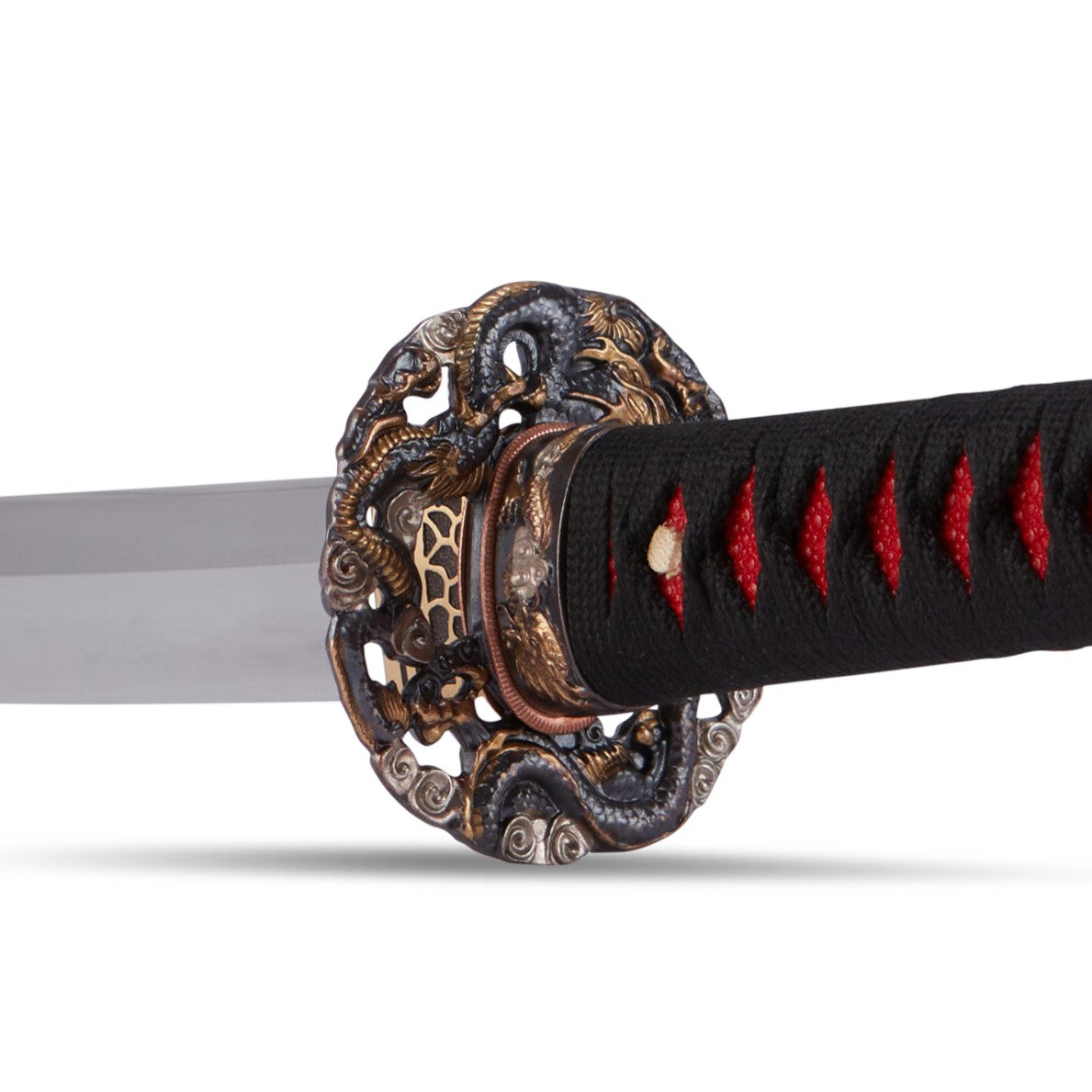A Glossary of Sword Terminology

Important Sword Words & Terms
Learning all the different parts of your sword is a great way to ensure you know what you’re talking about. Explore this glossary of sword terminology to learn more sword terms from the experts at Swords of Northshire.
B
Blade: The blade is the portion of the sword that’s used for cutting. In Japanese, the blade has a much more complex anatomy that includes the ha (tempered cutting edge), the mune (untempered edge), and the hamon (the border between the two sides of the blade).
C
Crossguard: This sword terminology is a metal piece that separates the blade from the hand wielding it. It’s meant to protect the hand from touching the blade during hard blows. Crossguards for Japanese blades are called tsuba and they’re generally a round metal plate with a slit for the blade.
G
Grip: The grip is a sword word that refers to the area where a hand grasps the sword. It’s located between the crossguard and the pommel.
F
Fuller: Many European swords have a groove running down the side of the blade that’s meant to lighten the weight of the sword. While this is rare in Japanese swords, you may still see a slight groove or even a slit along the entirety of a particularly large weapon, like an odachi.
Furniture: This is another European word popular in sword terminology that refers to any adornments on the scabbard. Japanese swords often have sageo, a cord that secures the scabbard to the samurai’s belt.
H
Hilt: This sword term encompasses the pommel, grip, and crossguard to make up the non-bladed portion of the sword. In Japanese, the hilt is called the tsuka.
P
Point: This word in sword terminology seems very obvious, but for Japanese swords, the anatomy is even more complex. The point is called a kissaki and it is separated from the body of the blade by the yokote.
Pommel: This part of the sword has two jobs. It secures all the parts of the hilt together and provides counterbalance weight for improved maneuverability. Japanese swords have a kashira, or end-cap, for their hilts, but it is not used as a counterbalance for the rest of the sword.
Q
Quillon: European swords often have longer, more decorative cross guards than Japanese weapons. The extension of a crossguard is called a quillon and is not often found on katana, odachi, or wakizashi.
S
Scabbard: A scabbard, sheath, or saya, is the best way to protect and carry a sword. It keeps the blade safe from damage and prevents accidental cuts.
T
Throat: The opening at the top of the scabbard where you can slide in your blade, also known as koiguchi for Japanese swords.
This is not a comprehensive overview of the anatomy of the sword, but it’s enough to get you started. Ready to put your sword terminology to good use? Explore our custom katanas to discover more about the Japanese version of blade anatomy.
Best Sellers
- Regular Price
- from $199.99
- Sale Price
- from $199.99
- Regular Price
-
- Unit Price
- per
- Regular Price
- from $299.99
- Sale Price
- from $299.99
- Regular Price
-
$0.00
- Unit Price
- per
- Regular Price
- from $619.99
- Sale Price
- from $619.99
- Regular Price
-
- Unit Price
- per
- Regular Price
- from $179.99
- Sale Price
- from $179.99
- Regular Price
-
- Unit Price
- per
- Regular Price
- from $319.99
- Sale Price
- from $319.99
- Regular Price
-
- Unit Price
- per
- Regular Price
- from $339.99
- Sale Price
- from $339.99
- Regular Price
-
- Unit Price
- per
- Regular Price
- from $219.99
- Sale Price
- from $219.99
- Regular Price
-
- Unit Price
- per
- Regular Price
- from $199.99
- Sale Price
- from $199.99
- Regular Price
-
- Unit Price
- per
- Regular Price
- from $364.99
- Sale Price
- from $364.99
- Regular Price
-
- Unit Price
- per
- Regular Price
- from $479.99
- Sale Price
- from $479.99
- Regular Price
-
$0.00
- Unit Price
- per

